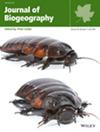Growing Completeness of Multitaxon Biodiversity Data From Citizen Science Is Associated With Long-Term Socioeconomic Advance in China
Abstract
Aim
The absence of comprehensive species distribution data may hinder our understanding of biogeographic patterns and the development of effective conservation strategies. Although citizen science data on biodiversity present opportunities to address these data deficiencies, it also introduces various biases. Here, we conducted an analysis of the completeness of citizen science data and its driving factors in China to address existing knowledge gaps and offer new insights for biodiversity conservation research and practise.
Location
China.
Time Period
2003–2019.
Methods
By integrating 1.75 million citizen science records of birds, plants and arthropods, we assessed record quantity, taxonomic completeness and temporal completeness at a fine resolution. This evaluation was carried out at both aggregate and trend levels. Utilising a multimodel inference approach that combined generalised linear models with machine learning, we elucidated the associations between multidimensional completeness and social, economic and landscape characteristics at both aggregate and trend levels.
Results
First, at the aggregate level, bird records dominated the dataset (n = 1,651,520), substantially exceeding those for plants (n = 26,780) and arthropods (n = 73,658). Species records were concentrated in major urban areas, which exhibited better taxonomic completeness (birds: 26.10%; plants: 4.72%; arthropods: 5.83%) and temporal completeness (birds: 0.27%; plants: 0.11%; arthropods: 0.19%). In contrast, non-urban areas had relatively lower taxonomic completeness (birds: 13.68%; plants: 2.61%; arthropods: 3.09%) and temporal completeness (birds: 0.09%; plants: 0.04%; arthropods: 0.09%). Second, at the trend level, record quantities, taxonomic completeness and temporal completeness all exhibited upward trends for the three taxa. Finally, socioeconomic factors were associated with the completeness metrics of most taxa. Notably, a consistent pattern emerged at the trend level, indicating a close association between changes in completeness and fluctuations in GDP.
Main Conclusion
We identify geographic and taxonomic disparities in biodiversity data across China. Additionally, we affirm that socioeconomic development plays a crucial role in enhancing the data completeness. We argue that establishing a unified framework, integrated with citizen science and national monitoring programmes, is essential for addressing potential data biases.

 求助内容:
求助内容: 应助结果提醒方式:
应助结果提醒方式:


